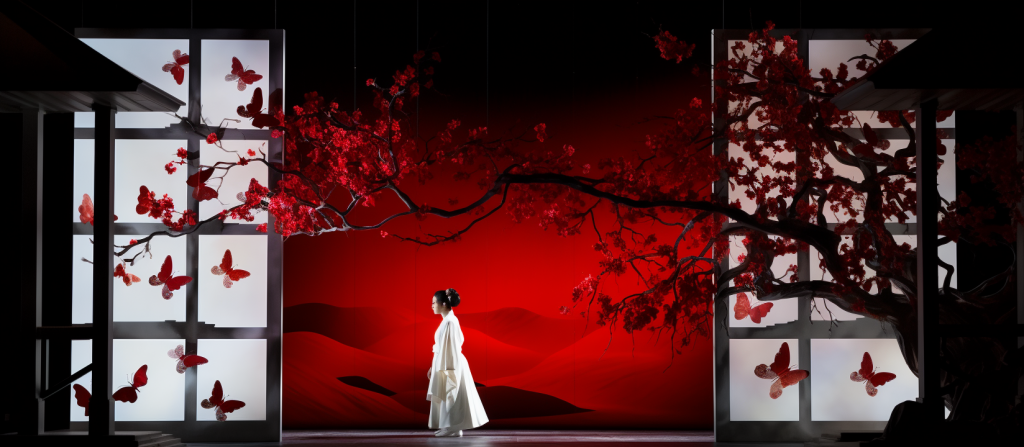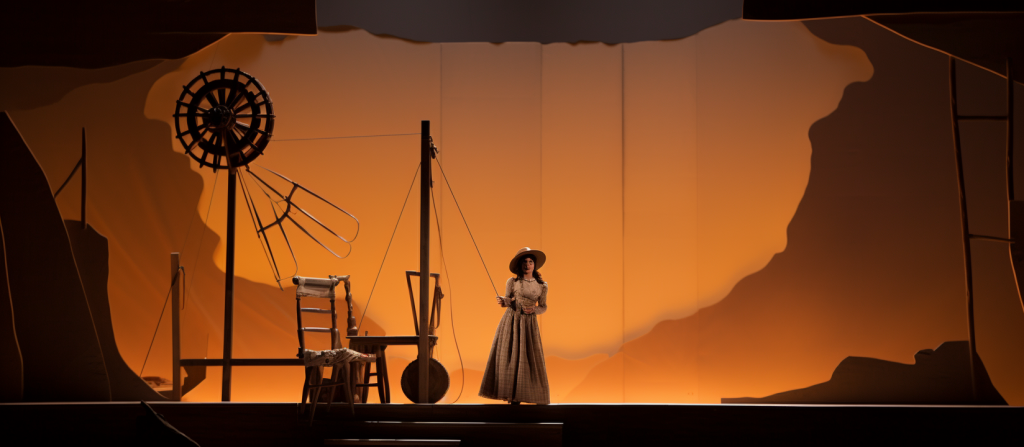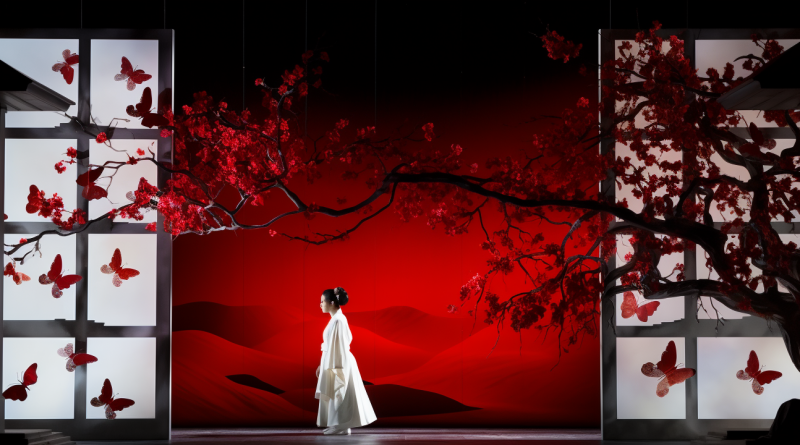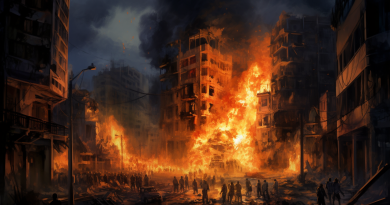Madame Butterfly at the Michigan Opera
On occasion, I actually do leave my house. Last night, we went to see Puccini’s Madame Butterfly at the Michigan Opera downtown. It was a stellar performance that included a moderately avant-garde setting and stage design, which was particularly well-executed. My wife, an avid bargain hunter, scored some cheap tickets, and we made our way to the mezzanine. The mezzanine was, somewhat disappontingly, half empty– the economics of charging high prices and then having half the seats be empty will always remain a mystery to me, but it overall felt like a good turnout, and we basked under the ornate glow of the “egg” dome that covers the mezzanine in the opulently appointed interior of the 1922 theater.
Every time I see Puccini, I happen to conveniently forget that just because this is opera, doesn’t mean that it is classical music. I say this as someone who has extensively studied classical, orchestral, and jazz music through the ages. But I’m not an opera nut, so I often forget how goofy and even experimental some of the motifs are– things that would not have existed in more traditional “classical” musical productions. Suffice it to say, it was probably fairly intensely weird for audiences in 1900, as it feels intensely weird for a modern audience, too (in a good way).
This version included some clever modern takes, like beginning the story with a man in a modern apartment who puts on virtual reality goggles to essentially go back in time to witness the opera itself, which culminates in effectively merging the operatic storyline with the modern-day storyline. My wife found the virtual reality to be a somewhat esoteric pretense, while I appreciated the lavish LED appointments to the apartment’s ultramodern trim, which provided dynamic background highlights that changed based on the scene.
The original opera premiered in 1904 at La Scala and was a bomb for reasons that aren’t quite clear. The subject matter is classically preposterous: boy meets girl, boy leaves girl, girl kills herself. It’s an unsubtle commentary on men being shitty, certainly, but what’s perhaps most fascinating about it is that it’s rooted in what was then a popular style of emulating an exoticized conception of somewhere else. Edward Saïd wouldn’t coin the term Orientalism for another three quarters of a century, but we can think about operas like Madama Butterfly (1904) alongside the likes of Gilbert & Sullivan’s The Mikado (1885), one of my all-time favorites, which itself is a satire of the British obsession with a sort of commodified and invented conception of the Far East.
One supposes that this is how empires roll, perhaps.

Puccini was inspired by fantastical images, certainly, but he had never actually been to the United States until after the premiere of the opera in his native Italy. He came to New York for the first time in 1906, where he reveled in America as “a paradise of gadgets and machines,” wrote American opera biographer Mary Jane Matz in a 1959 commentary. I was struck by the similarities to Franz Kafka’s Amerika, a novel set in a country that the author had also never visited. Perhaps my favorite part in Amerika, beyond just how delightfully weird it is, is toward the beginning, where the European visitor to New York notes that his cousin’s desk was a proper American desk, with a regulator! What is a regulator? We may never know. Stated one commentary, the regulator represents Kafka’s general approach to technology and bureaucracy: as “systems that are at once omnipresent and completely opaque.”
But this parallels with Puccini’s obsession with the gadgetry and shiny brass and machinery of the New World, especially in contrast with his native rural Italy. Kafka’s novel, meanwhile, also includes a westward venture in which Karl Roßman, the protagonist, heads west to work for a mysterious, expansive institution called the Theater of Oklahoma, and rename himself “Negro.” This is a fascinating and bizarre turn of events for the end of the novel (which itself remained unfinished in its entirety and was only published in 1927), and I’m mentioning it as part of this peculiar European preoccupation with American culture, mythos, and technology.
It was on the New York trip that Puccini announced his plans for his next opera to be set in the American West (La fanciulla del West, translated as Girl of the Golden West, 1910). Like Butterfly, Puccini wrote this adapted from a work by David Belasco, himself an impresario and creative powerhouse who had adapted both for the stage from written works. It’s a more classically Western piece than Butterfly is a classically anything-specific piece, although some of the details are, again, not quite right, like the Mexican character named Ramerrez (almost!). The European preoccupation with the American West is certainly a well-established phenomenon, but in the case of Butterfly, I was struck by how the American characters feel like caricatures of real Americans. The Naval Lieutenant who weds a Japanese child in Butterfly is named B.F. Pinkerton, or Benjamin Franklin Pinkerton, and he comes on a ship called the Abraham Lincoln. I laughed out loud when this was announced for the first time.

The music incorporates plentiful motifs of not only Japanese traditional folk melodies but also the Star-Spangled Banner. Pinkerton, whose name feels like it is almost certainly a reference to the eponymous detective agency and strike-breaking thugs that were popular in those days, is presented as an unrepentant cad who at least presents well. (The Pinkerton Agency was established in the 1850s and by 1900 had a long track record of conniving, usually anti-labor brutality under the auspices of law and order). Pinkerton’s sidekick, meanwhile, is the American consul in Nagasaki, named Sharpless. It’s a “close, but not quite” invention of an Anglo-American name.
I’m not well-versed enough in opera and orchestral scenes to be able to comment on the production itself beyond that it’s highly visually compelling, with gorgeous costumes, elaborate sets that assume complex dimensionality with world-class lighting, and an international cast of thoroughly talented performers. Fanciful, and certainly beautiful, I’d recommend it, whether you’re an opera fanatic or just a person who enjoys the (recommended) experience of having to sit in the same place for three hours watching a specific, intricately constructed spectacle. Don’t worry– there’s an intermission and they even have $5 White Claws.
There are still performances this week and next of Madame Butterfly at the Michigan Opera in downtown Detroit.



